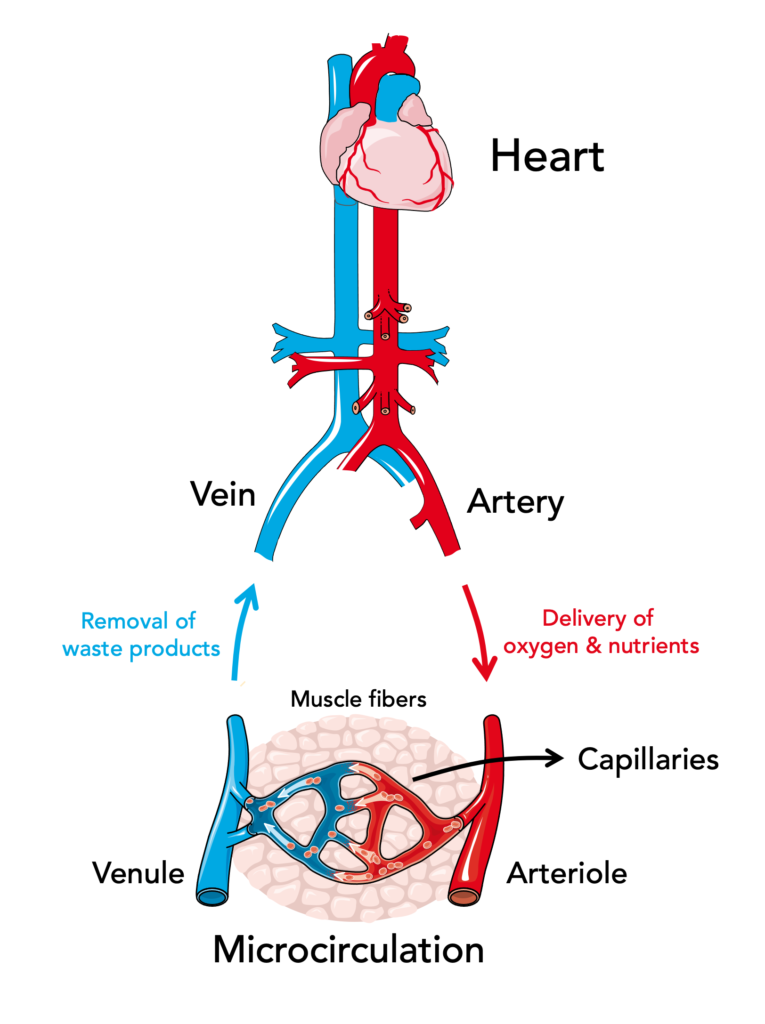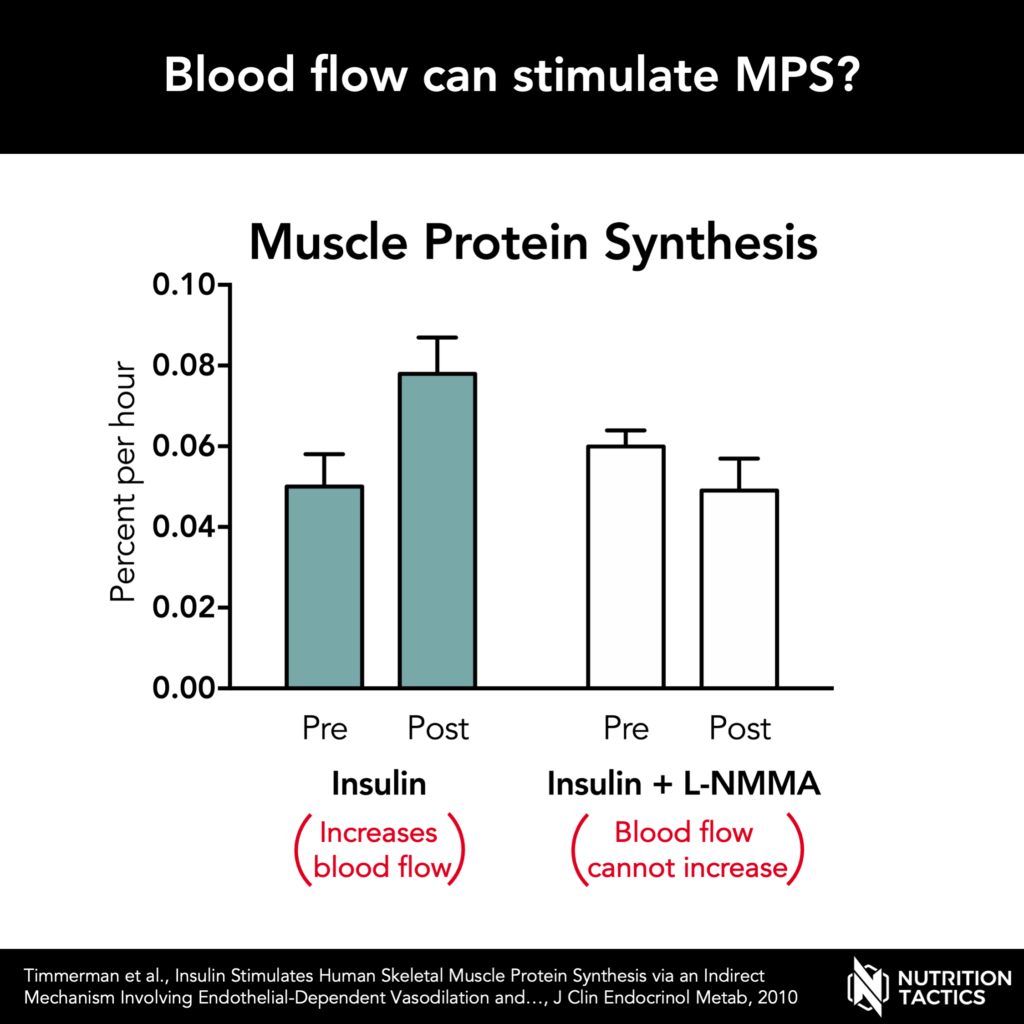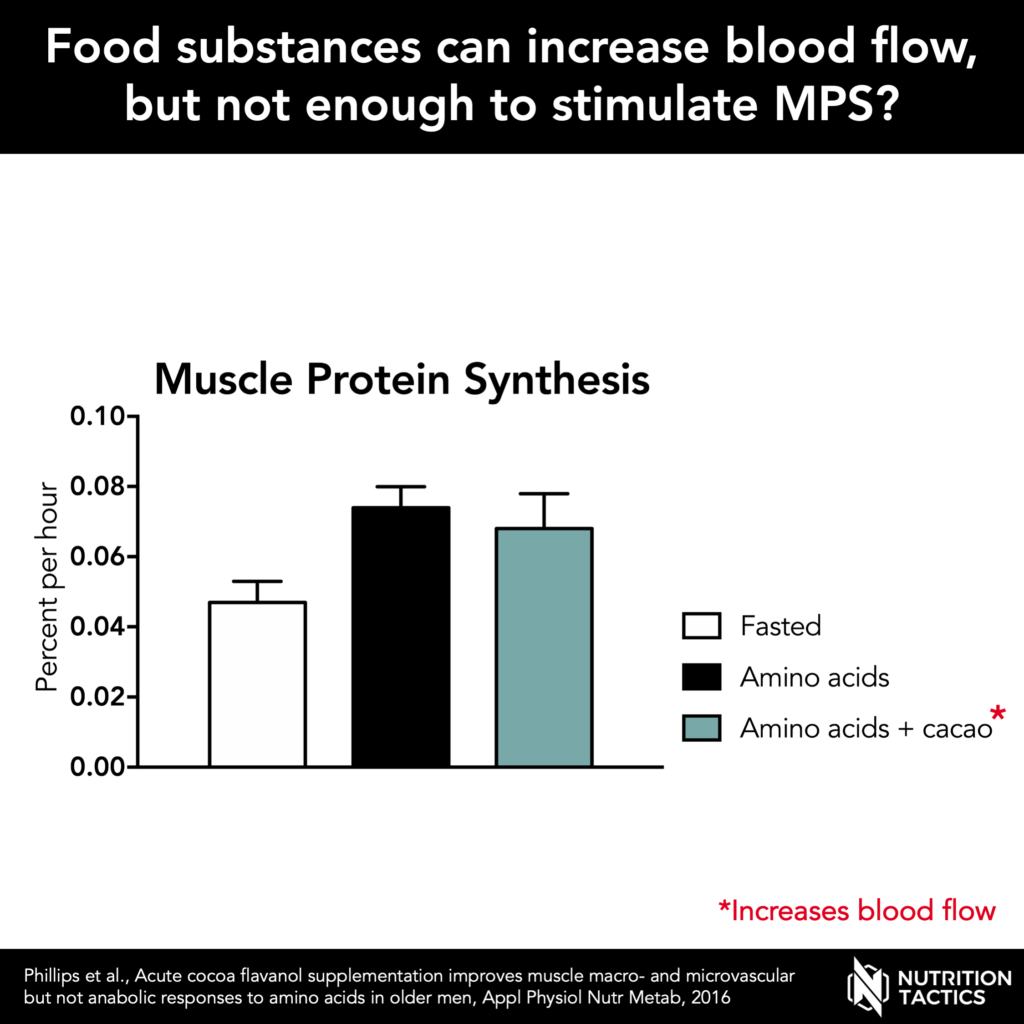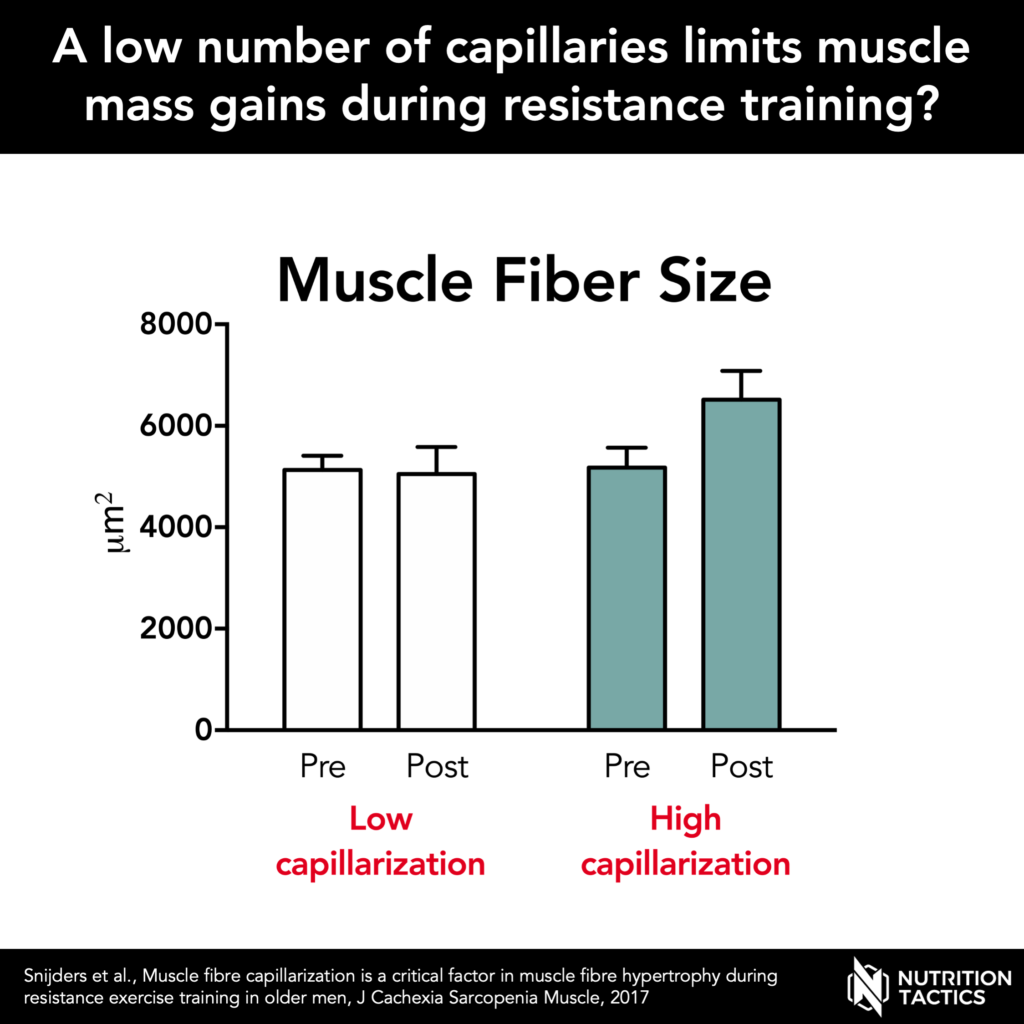Everyone who lifts weights knows the very tight feeling in your muscles during and after a heavy set, which is often called “the pump”. One of the factors that gives this tight feeling is an increase in muscle blood flow.
In this article, we’ll cover everything you need to know on blood flow and its importance for muscle recovery and growth.
What is muscle blood flow and why is it important?
The main function of blood is transport. On one hand, blood delivers useful substances to the muscle, such as oxygen, nutrients, hormones, and even more. On the other hand, blood removes waste products from the muscle, such as CO2.
The heart pumps blood around the vascular system, which goes from large arteries into smaller arteries and eventually to the microcirculation of the muscle. The muscle microcirculation consists of arterioles and the smallest blood vessels: the capillaries.
The capillaries are located in between the muscle fibers and this is where the delivery of oxygen, nutrients, and hormones, but also the removal of waste products takes place. However, it is good to note that blood flow through the capillaries is regulated by the arterioles being open or closed. After the blood passes through the capillaries, it goes back to the heart via the small veins (i.e. venules) and the larger veins (see figure below for overview).
It is clear that muscle blood flow plays a very important role in normal muscle functioning. However, the importance of blood flow becomes is even more pronounced during exercise. During exercise, the metabolic demand (need for energy) of muscle increases. To match these energy needs, muscle blood flow can increase up to 100-fold compared to resting levels.
This incredible increase in muscle blood flow is a product of several factors, such as increases in:
- Cardiac output (how much blood the heart is pumping into the arteries)
- Arterial blood flow (blood supply towards the muscle)
- Capillary recruitment (small blood vessels that open up)
Acute effects
Muscle protein synthesis is the process driving muscle adaptations and growth.
Increasing blood flow with a pharmaceutical agent has been shown to increase muscle protein synthesis (Timmerman, 2010). However, when an additional pharmaceutical agent was added to prevent an increase in blood flow, it also prevented the increase in muscle protein synthesis (see figure below)1.
This suggests that an increase in blood flow can stimulate muscle protein synthesis.
However, it is important to realize that pharmaceutical agents typically have a much stronger effect than what normally occurs in our bodies. For example, some food substances, such as cacao, can also increase blood flow. However, this effect is much less compared to pharmaceutical agents and not strong enough to stimulate muscle protein synthesis (Phillips, 2016).
These acute studies show that an increase in blood flow can increase muscle protein synthesis rates, but only when the increase in blood flow is very large.
Chronic effects
However, blood flow is an ongoing process, it never stops. So can long-term changes in blood flow impact muscle growth?
Unfortunately, it is practically impossible to study long-term changes in blood flow. Instead, we can look at anatomical structures related to blood flow, such as the number of capillaries in muscle tissue (i.e. capillarization).
We have performed a study to investigate the impact of capillarization on muscle mass gains (Snijders, 2017). Older subjects were divided in a low or a high capillarization group. The low capillarization group did not gain muscle mass during a 12-week resistance training program. In contrast, the high capillarization group did gain muscle mass. Similar results were found in another study in older men and women (Moro, 2019). Therefore, it appears that low muscle capillarization could limit muscle mass gains during resistance training in older adults.
It should be noted that older adults have lower capillarization when compared to young. Therefore, it is possible that capillarization is not a limiting factor in younger adults. However, there are some indications that capillarization can also be an important factor in muscle regulation in young adults. For example, it has been shown that capillarization is related to the activation of satellite cells, which are the stem cells of muscle tissue that are important for muscle adaptation (Nederveen, 2018).
So can you increase capillarization?
Yes, it is possible by being very active and exercising a lot. So if you’re already training to maximize muscle growth, there may not be much more that you can do.
However, many researchers (including myself) are looking into new strategies to increase capillarization and blood flow, such as different types of exercise, heating and cooling, blood flow restriction, and massage.





I’m wondering it that beet powder and L-citrulline I’m taking to sharpen my pencil with more nitric oxide is also a good strategy for more blood flow to my 63 year old muscles?
I’m also considering taking vitamin C + garlic mix to stimulate NO2 and blood flow. Do you have any thoughts on that?
Yeah, beet powders and L-citrulline are beneficial to improve blood flow (everywhere). I’m not familiar with garlic mix for that purpose.